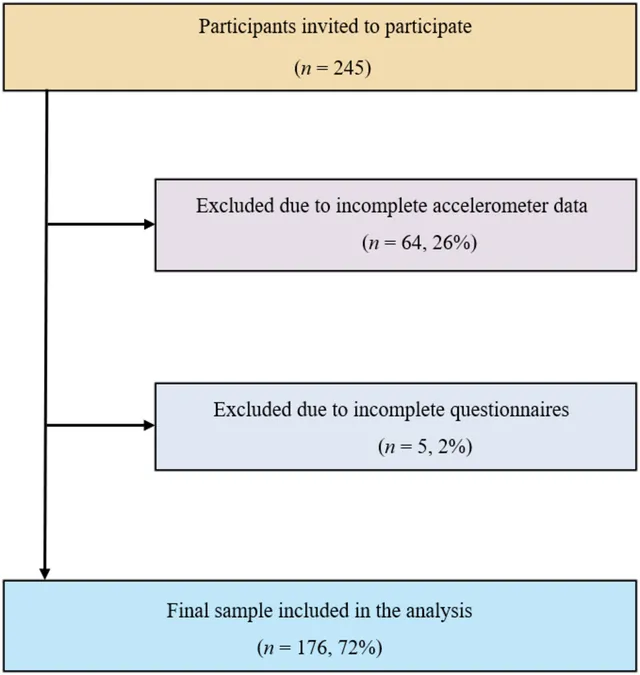
Unlocking the Secrets: How 24-Hour Activity Patterns Affect Adolescent Anxiety
2025-05-17
Author: Yu
Understanding Adolescent Anxiety: A Growing Concern
Anxiety disorders top the charts as the most prevalent mental health issues among adolescents, showing disturbing effects on their emotional and social well-being. Reports indicate that anxiety affects up to 16.6% of teens in countries like the United States and Turkey, with similar concerns mirrored in China. This alarming trend emphasizes the need for effective strategies to combat youth anxiety.
The Role of Physical Activity in Reducing Anxiety
Evidence indicates that various forms of physical exercise, from high-intensity interval training to more serene activities like tai chi, can help alleviate anxiety symptoms. Unfortunately, many adolescents gravitate towards sedentary lifestyles, eschewing light and moderate physical activity. This shift not only increases anxiety but also correlates with worsening mental health outcomes.
Unpacking 24-Hour Activity Patterns
The dynamic between physical activity, sedentary behavior (SB), and sleep is crucial. A shift in any of these activities will inevitably affect the others. Traditional methods have struggled to capture this interplay effectively, leading researchers to advocate for a newer approach called compositional data analysis (CoDA). This method emphasizes viewing daily activity as a whole rather than isolated behaviors.
Innovative Research Approaches at Work
Recent studies harnessing CoDA and an isotemporal substitution model offer fresh insights into how activity components influence anxiety. For instance, while some found that sleep could mitigate anxiety levels, others suggested that replacing screen time with active pursuits like moderate-to-vigorous physical activity (MVPA) might be more beneficial.
A Fresh Approach: Accelerometers and Accurate Data
One groundbreaking study utilized accelerometers to track and measure activity, yielding more reliable insights compared to self-reported data. Researchers focused on a group of Brazilian adolescents, further enhancing our understanding of how different types of activity affect anxiety symptoms over time.
Cutting-Edge Findings and Gender Dynamics
Emerging data suggest that as adolescents increase their MVPA, their anxiety decreases significantly. However, the study highlighted stark gender-based discrepancies; adolescent girls exhibited higher anxiety levels than boys. This disparity raises questions about societal pressures and how they uniquely affect both genders.
Unlocking the Relationship Between Activity and Anxiety
Crucially, the results reveal that reallocating just 15 minutes of sedentary or light activities towards MVPA can lead to a marked decline in anxiety levels. Conversely, substituting MVPA with sedentary activities can dramatically heighten anxiety. This emphasizes the importance of integrating refined physical activities into adolescents' daily routines.
Taking Action: Implications for Interventions
As we unravel the complexities linking activity levels and anxiety, the findings underscore an urgent call for targeted interventions aimed at boosting MVPA and reducing SB among adolescents. Simple steps like replacing screen time with active pursuits could hold the key to alleviating anxiety and promoting mental well-being.
The Road Ahead: Future Research Directions
While this research opens the door to innovative strategies, limitations exist, such as the lack of differentiation between various activity types. Future studies should focus on a more nuanced understanding of how different exercises can impact anxiety, ideally through longitudinal designs that could better establish causal relationships.





 Brasil (PT)
Brasil (PT)
 Canada (EN)
Canada (EN)
 Chile (ES)
Chile (ES)
 Česko (CS)
Česko (CS)
 대한민국 (KO)
대한민국 (KO)
 España (ES)
España (ES)
 France (FR)
France (FR)
 Hong Kong (EN)
Hong Kong (EN)
 Italia (IT)
Italia (IT)
 日本 (JA)
日本 (JA)
 Magyarország (HU)
Magyarország (HU)
 Norge (NO)
Norge (NO)
 Polska (PL)
Polska (PL)
 Schweiz (DE)
Schweiz (DE)
 Singapore (EN)
Singapore (EN)
 Sverige (SV)
Sverige (SV)
 Suomi (FI)
Suomi (FI)
 Türkiye (TR)
Türkiye (TR)
 الإمارات العربية المتحدة (AR)
الإمارات العربية المتحدة (AR)